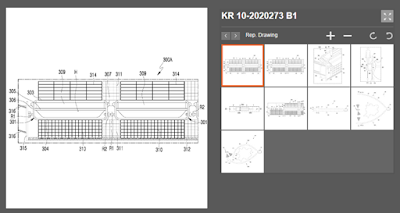Intellectual
property refers to the property of everything human created, such as education,
research, culture, art, technology, etc., that is, intangible knowledge,
deviating from the existing tangible property. Like any other type of property,
it is protected by rights because it can be developed, owned, managed and
commercialized to generate economic returns. This time, we’re going to look at
the economic value of IP assets.
What
are IP assets?
IP
assets are a collection of intellectual property, such as patents, trademarks,
copyrighted works, industrial designs, geographical indications, trade secrets,
etc. strategically selected for business value. It has economic value because
of its ability to enhance the value and financial returns of technology,
products and services. Businessmen and policy makers define IP as adding the
word “assets” to give both legal rights as well as the economic interests of
the owner.
 |
| 🔺 picpedia.org |
IP
assets are outputs produced through human capital. Without human capital,
intellectual property cannot be created and economic development is impossible,
so human capital is very important for economic growth. However, human capital
itself is difficult to impart economic value because there is no way to own it
or its legal status. That is why it recognizes its legal status and economic
value by giving the character of an asset to the IP produced through the human
capital.
In
particular, today, the combination of human capital and IP assets is the most
important driving force for economic development in a knowledge-based economy.
Reasons
to develop and manage IP assets,
In
the 1990s, the development and management of IP became a major concern in the
rapidly growing technological and cultural industries. Intellectual Asset
Management (IAM) was taught in the Graduate School of Business and has
established itself as a specialized field provided as a service in accounting,
consulting, and law firms. IP assets are becoming increasingly valuable and
important economic assets through active and strategic policies. Even at the
macroeconomic level, IP assets, including human capital and IP, are recognized
as the most valuable factors. Therefore, policy makers are trying to use IP
assets as a key tool for economic policy, and insist that just as companies
strengthen their technology through IP portfolios, the country should also
strengthen its IP portfolio.
 |
| 🔺 flickr.com ©Mike Lawrence |
The
U.S. National Knowledge and Intellectual Property Task Force explains IP assets
as follows:
- In the IP economy, a company's value is
determined by its ability to seize new market opportunities by converting
“KNOWLEDGE” to net worth in a timely manner.
- In addition, as product cycles are
shortening and competitors shorten time-to-market, companies must continually
verify and improve the process to develop and commercialize new ideas.
- In other words, revising the company's
strategy and leading the market in line with the rapid growth of intellectual
property is the core of IP asset management.
How
can IP assets help economic growth?
IP
assets affect economic growth in several ways. One of the most important ways
is to generate royalty revenue through licensing. Revenues from patent
licensing worldwide increased from $15 billion in 1990 to $100 billion in 2000.
IP
licenses can help companies lower costs or access to products, which will
steadily increase profitability. IBM raised more than $1.7 billion in licensing
royalties in 2000 alone. Universities also used IP assets to support their
budgets and for continuing education and research. Universities and research
institutions in Canada and the United States reported $1.36 billion in revenue
from licensing for fiscal year 2004. SMEs in developing countries have also
selected IP assets as a key area that can help them participate in technology
transfer agreements, attract joint ventures, and expand into new regional
markets. IP assets also increase the value of the company in mergers and
acquisitions. IP assets, such as patents, trademarks, and copyrights, can be
valued higher than their actual value depending on which company they are
merged with.
 |
| 🔺 pixabay.com |
Why
IP assets have economic value,
If
IP assets are properly managed, the following effects can be expected. Motivate
and support to monetize product sales and licensing royalties.
- Increase
in high value-added exports
- Attracting
high value-added foreign direct investment (FDI) and joint ventures
- Support
to retain and motivate technical staff
- R&D-based
industry activation and job creation
- Support
for educational and research institutions
- Strengthen
corporate value evaluation
- Promote
funding for R&D to provide and improve necessary technologies and products
- Provides
bargaining power in technology transfer negotiations
- Support
to access goods and technology through license agreement
 |
| 🔺 pixabay.com |
What
should policy makers do to promote the development and management of national
IP assets?
Policy
makers are responsible for IP auditing, target setting and measurement, group
identification for IP asset development, funding for research and development,
IP policy planning and coordinating education and economic policies, IP
strategic planning including financial support for tax and other IP development.
Developed. In addition, a plan was introduced to enable SMEs and non-profit
research institutes such as public-private ventures and patent application
funds to realistically handle IP ownership.
IP
asset development and management consists of four elements: IP evaluation, IP
infrastructure construction, IP training, and IP assets. All of these factors
are interrelated and should be viewed in the context of a holistic system.
-----------------------------------------------------------------------------------------
This is a partial excerpt from
'IP Asset Development
and Management: A Key Strategy for Economic Growth (WIPO, 2004)'






















































